
Welcome to the
Brighton Hippodrome
History
The Hippodrome is a Grade II* listed building
with a significant and distinctive space at its
heart.
Bold colors and unique shapes
The Hippodrome is a Grade II* listed building
with a significant and distinctive space at its
heart. It is almost a ‘found space’, a snap-shot
of a grander time now in near-terminal decline.
Its overall significance as an historic building
has been diminished somewhat by the decay
caused by being unoccupied for 15 years,
and by the alterations to the Matcham theatre
over the years. Although the evidential value of
some of the fabric is compromised, the value
of the building as an idea and as a place of
entertainment and assembly continues to be of
importance.
Pre-1985
Pre-1985
The site of the auditorium was occupied by small houses in a tight urban grain which were later demolished to make way for an Ice Rink.
1896
 1896
1896
1896
1896
The character of the site and the area was to fundamentally change with the development of a substantial Ice Rink, with a large glass domed roof, designed by Lewis Karslake. It took up much of the site at the time, fronting onto Middle Street only, and changing the scale of development in the area substantially, with 20 or so existing houses on the footprint of the new building. It was the single biggest change to the scale and mediaeval pattern of development in the area with the exception of the introduction of Prince Albert Street in 1842. It survived as an Ice Rink for under 4 years
1901
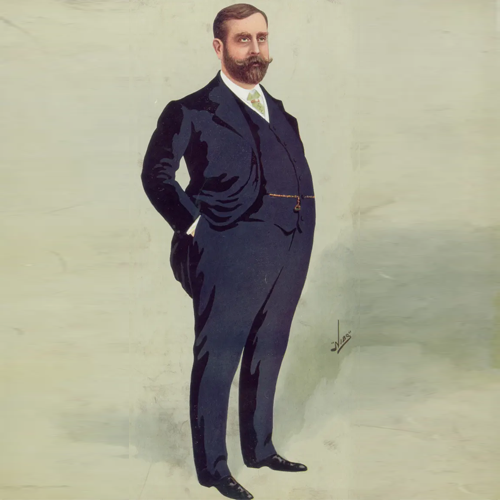 1901
1901
1901
The owner R Ellished Humfrey Bramall had to find a new use for the large building they owned and decided upon an indoor circus and commissioned Frank Matcham to undertake the first of his alterations to the building. He was mainly concerned with the interior and kept the existing façade largely intact but added the new name HIPPODROME in large relief letters between the two towers and altered the front façade by adding a central entrance and a canopy. Matcham also retained much of the structure of the ice rink, but substantially altered the building internally. .
1901
Although the tentlike structure of the auditorium, a segmented dome supported on 16 pillars was retained, modifications were made on the east side to introduce the stage and fly tower, which involved the removal of two of the primary columns and the trimming of the corresponding roof beams to the face of the new proscenium wall. The masonry arches between these columns were also demolished, affecting the stability of the dome. At this point in the theatre’s history the height of the proscenium arch and the stage behind was limited by the height of the existing dome above it.
1901
On either side of the proscenium were curtained animal entrances. Equestrian ramps were formed through the existing masonry arches to both sides in front of the stage. Access was from the stables to the north of the site which in turn was accessed from Middle Street. Matchams alterations included encasing much of the individual elements of the earlier building in decorative plaster features and a deep balcony
1902
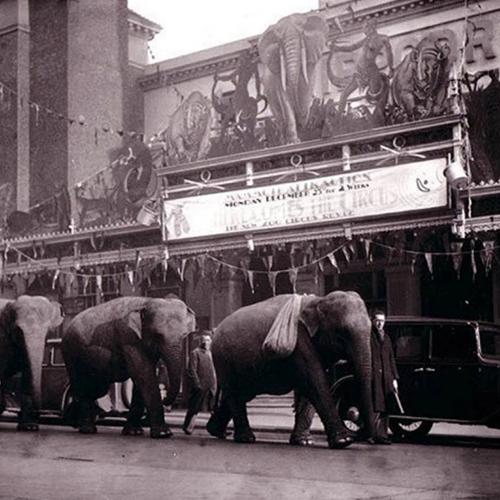 1902
1902
1902
The Brighton Hippodrome Theatre and Circus opened in August 1901 but only lasted for one year when it was offered at auction in October 1902. It was at this stage, included in the lot, the double-fronted residence at no.52 Middle Street, now known as Hippodrome House, and a small cottage at no 50. It was bought by Thomas Barrasford, who owned a chain of music halls in the north of England, pioneering twice-nightly variety.
1902
Matcham was retained as architect to undertake a further string of alterations to turn the circus into a theatre by widening the proscenium, replacing the circus ring with a raked floor in the stalls area along with the orchestra pit. Stage boxes were added with their distinctive “onion” domes, replacing the animal entrances and truncating the equestrian ramps The Hippodrome Theatre of Varieties re-opened on 22 in the process. December 1902. Barrasford and his wife Maud moved into Hippodrome House, thus keeping it as its existing residential use.
1910
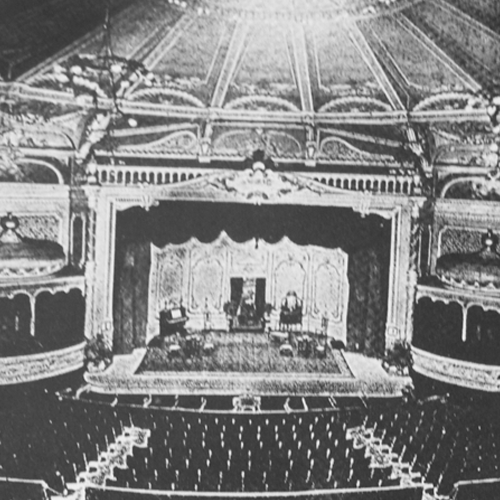 1910
1910
Barrasford became seriously ill and died in February 1910 and soon after, the Hippodrome was acquired by Variety Theatres Controlling Company (VTCC), a company set up by two theatrical entrepreneurs, Sir Alfred Butt and Walter de Frece. It is clear that by this time, there is a canopy in place on the Middle Street Elevation that is not part of the original Matcham designs.
1910
Barrasford became seriously ill and died in February 1910 and soon after, the Hippodrome was acquired by Variety Theatres Controlling Company (VTCC), a company set up by two theatrical entrepreneurs, Sir Alfred Butt and Walter de Frece. It is clear that by this time, there is a canopy in place on the Middle Street Elevation that is not part of the original Matcham designs.
1915-1916
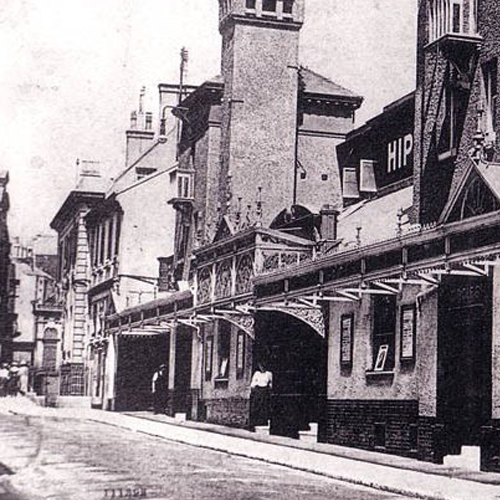 1915-1916
1915-1916
1915-1916
The original Matcham stage arrangement and Proscenium arch lasted only 14 years before significant alterations were made by theatre architect J Emblin Walker. These changes included the creation of a new stage and fly tower, the removal of two primary columns, the addition of a dressing room block, and major alterations and redecoration of the auditorium. The proscenium was enlarged, and existing boxes were raised by a floor.
1915-1916
In summary, the alterations introduced an entirely new stage building, removal of steel supports, and changes to the proscenium and enclosure walls. The remarkable feat of carrying out these modifications while keeping the theatre open showcases the expertise of J Emblin Walker.
1915-1916
These substantial alterations, including the construction of a new stage building around the existing one, were accomplished without closing the theatre for a single night. However, the complexity of the project, involving the cutting of the existing ring beam and interference with the overall symmetry of the dome, may have resulted in lower construction standards and reduced overall stability.
1930’s
1930’s
Further alterations to the interior were made in the 1930s but no records apparently exist.
1940’s
1940’s
Minor alterations were made in the late 1940s including additional toilet accommodation and alterations to the foyer under taken by architect E M Lawson. It was at this time that the Matcham ticket booth in the centre of the main entrance on Middle Street was removed and the vestibule behind opened up. The middle of the three Matcham elements was then opened up to a new foyer.
1950’s
1940’s
The stage house was rebuilt by the architect E M Lawson in 1956
1964
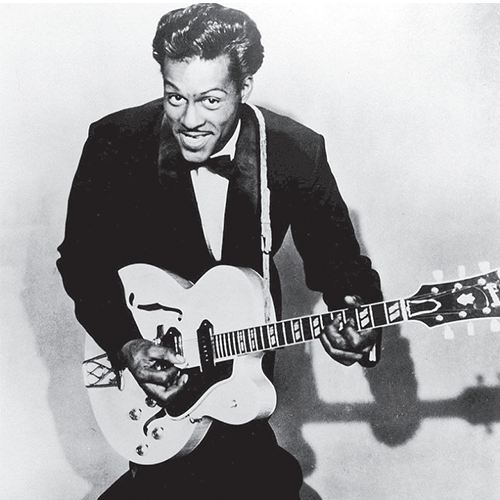 1964
1964
1964
The theatre was closed on Sunday 22 November with a performance by Chuck Berry.
1965
1965
The auditorium was converted by E M Lawson into a film and television studio with a flat floor installed over the stalls.
1967
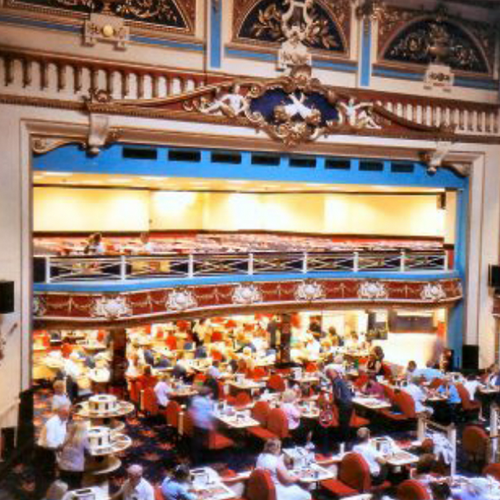 1967
1967
1967
The Mecca Organisation took the building over and converted into a bingo hall. At about the same time two properties in Ship Street were demolished to create an open space that was added to the Hippodrome site as a car park, which reflects the site as it is today
1980
1980
The entrance canopy was removed (and replaced in the 1990s).
1985
1985
The Hippodrome was given a Grade II* listing on 20th December.
2006
 2006
2006
2006
2006
The building was closed in August and the Academy Music Group (AMG) then took a lease on the site and spent several years developing a plan to create a music venue to join the Academy O2 chain, but did not proceed with it
2013-2014
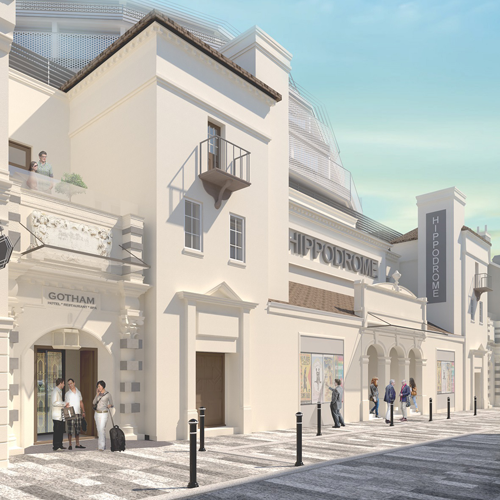 2013-2014
2013-2014
2013-2014
A planning application to convert the building into an eight-screen cinema with restaurants was submitted and consented. The plans involved demolishing the stage, the fly-tower, all the back-stage facilities, the stalls and the orchestra pit. It also included the addition of a complete floor at balcony level, “cutting” the main auditorium space in two.
2018
2018
A further scheme was developed for a mixed-use development centered on the Hippodrome as a live performance venue. The proposal included a themed “Theatrical” Boutique Hotel and serviced apartments occupying both the upper floors of the existing Hippodrome House and new- build above the existing dome.
2018
2020
Matsim purchased the site in September 2020 and within two weeks were on site to prevent further deterioration of the building that had been closed and allowed to fall into disrepair over 14 years. A viable Business Plan has now been developed.
Plans
The Future
The vision for the site is a mixed-use development
focused on the Hippodrome as an innovative hospitality
venue to breathe new life, vitality and vibrancy into the
Grade II* listed building and using the historic environment
as a key inspiration for the delivery of dramatic physical
and economic transformation of this part of the Old Town
Conservation Area.
The importance of the Hippodrome as a Grade II* listed
building with a significant and distinctive space at its
heart, speaks for itself. It is also obviously a key building
within the Old Town Conservation Area, which also,
perversely, provides an urban contradiction to the area
in terms of its scale, use and architectural character. This
is not the only contradiction. It is a massive structure
whose Dome is unseen from the street and what can
be seen is through gaps in a fragmented streetscape
demonstrate both unattractive views into the site and
also detracts from the character of the Conservation
Area as a whole. This negates the sense of enclosure
that characterises the Old Town’s street scene.
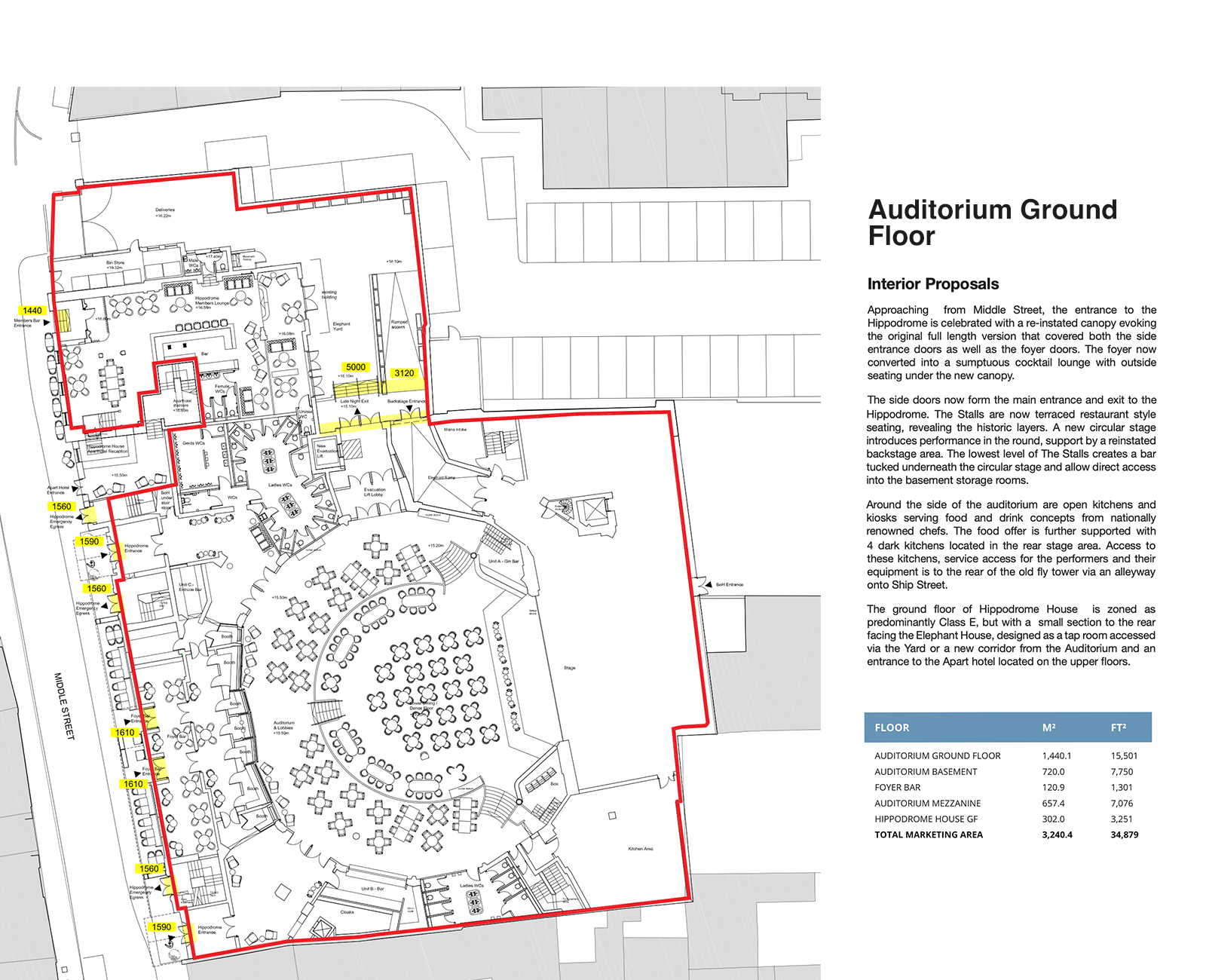
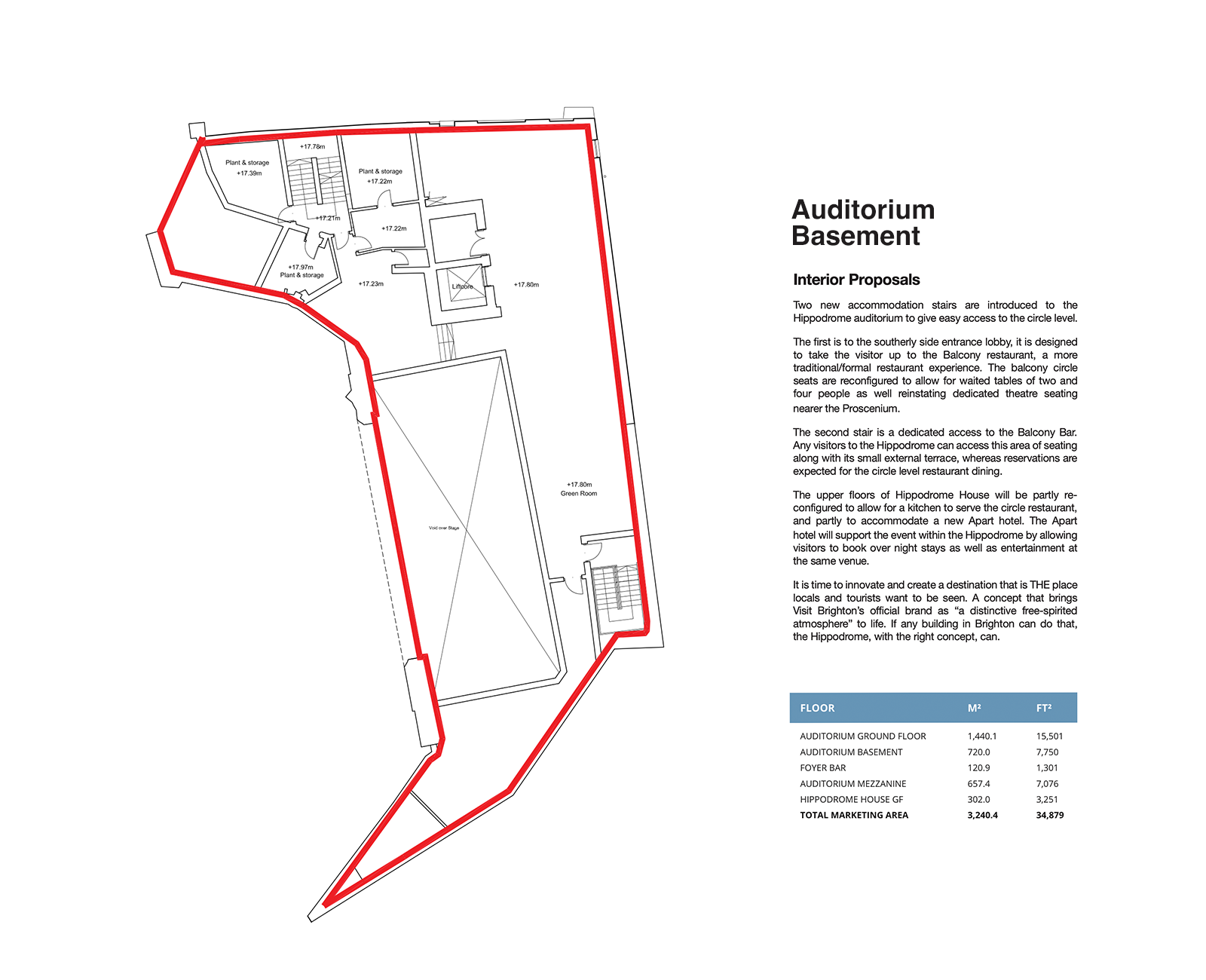
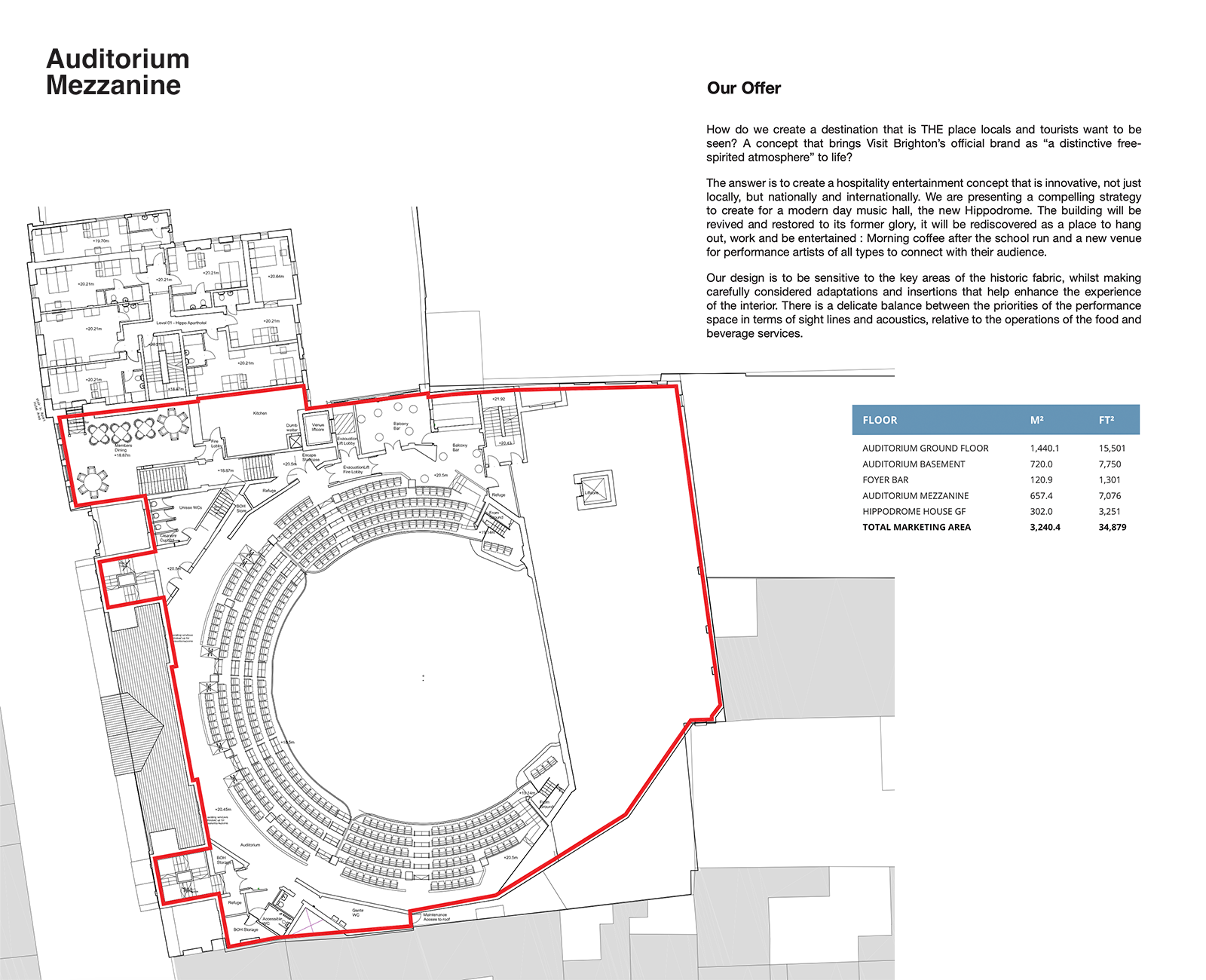

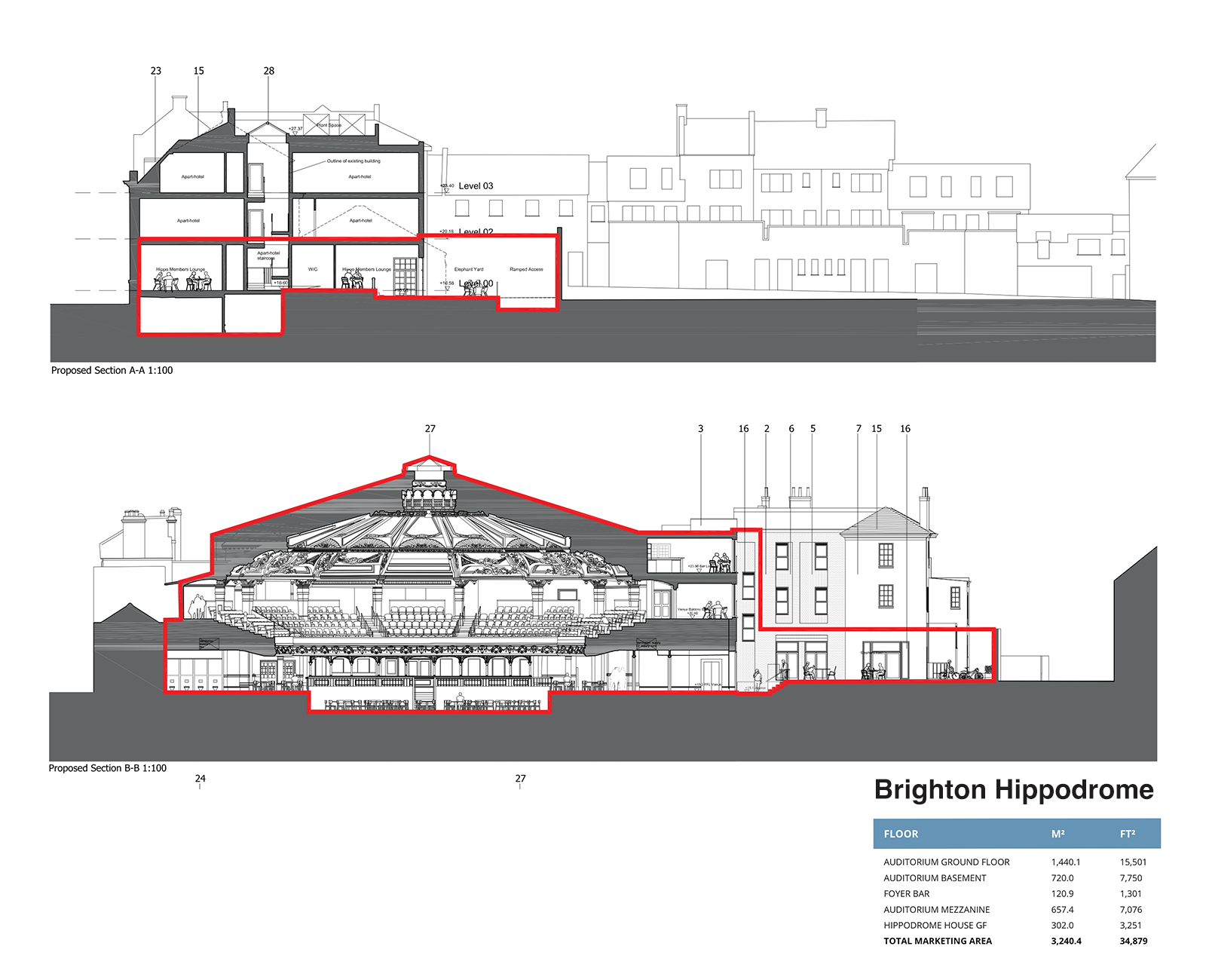

MEDIA

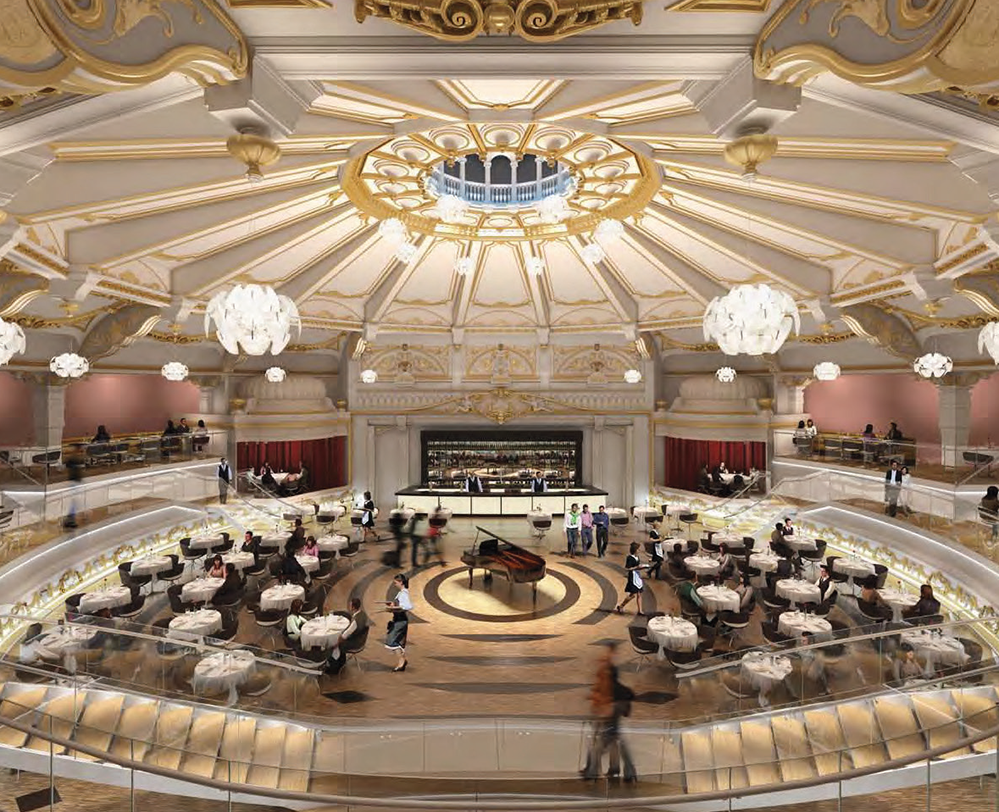
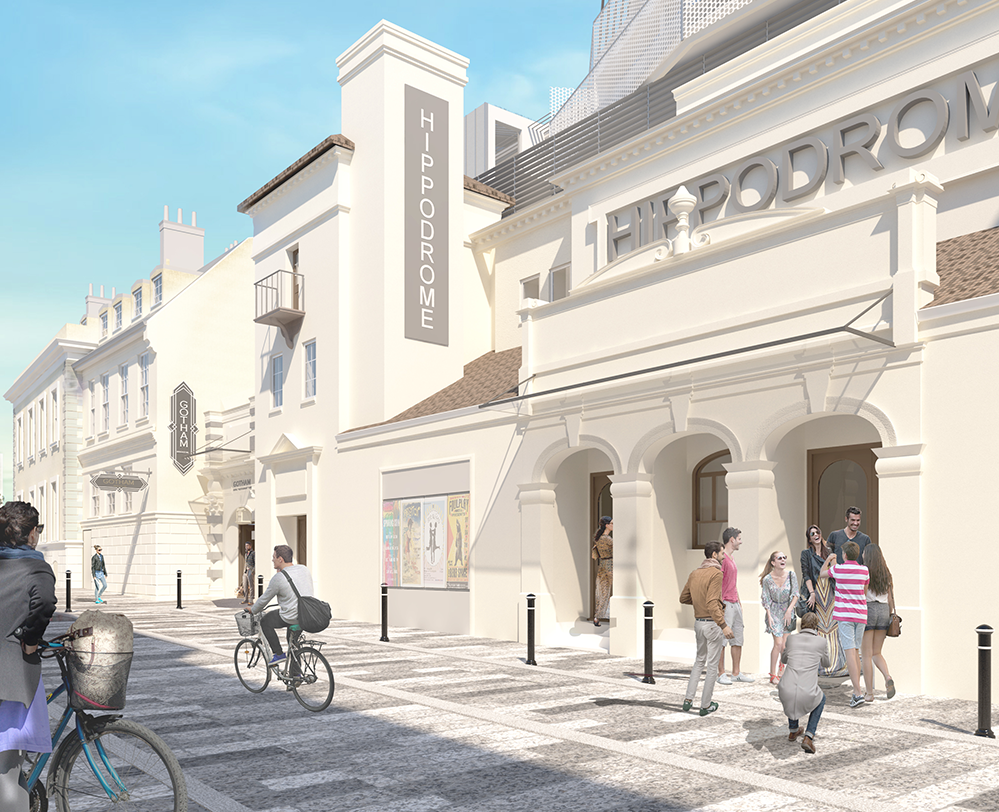

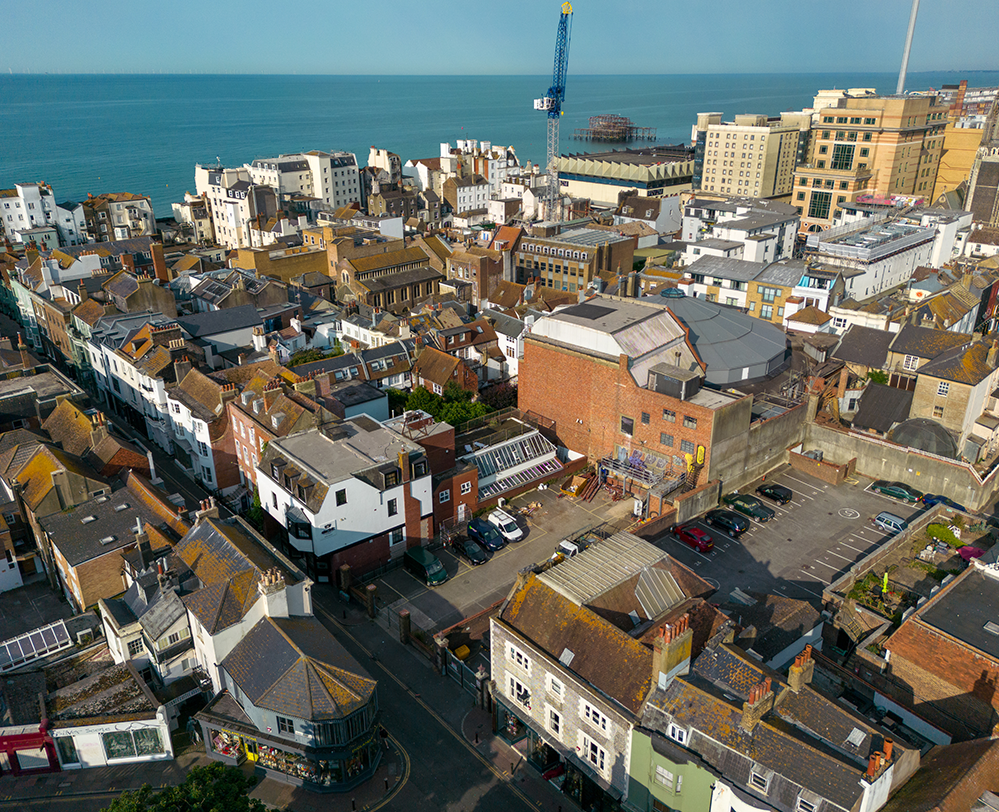
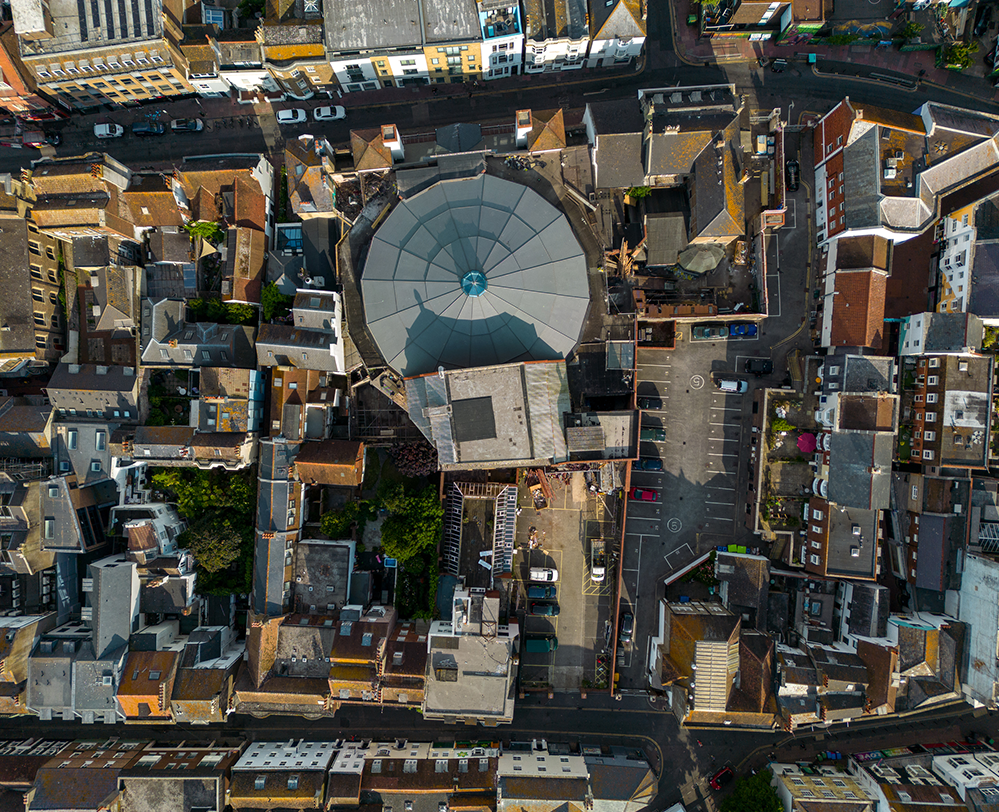

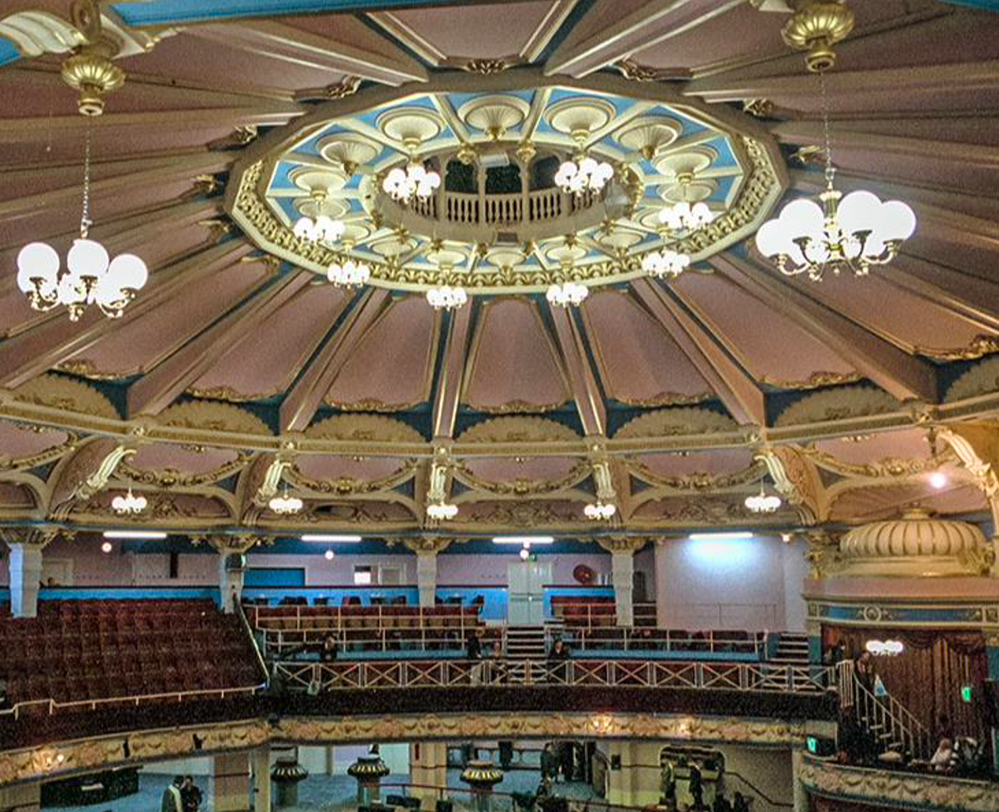


Request Data
Room Access
Included in our data room :
- Floor plans, elevations and sections
- Technical consultants
- Summary of granted license
- Base Consented License
- Handover spec and utility connections
Contact
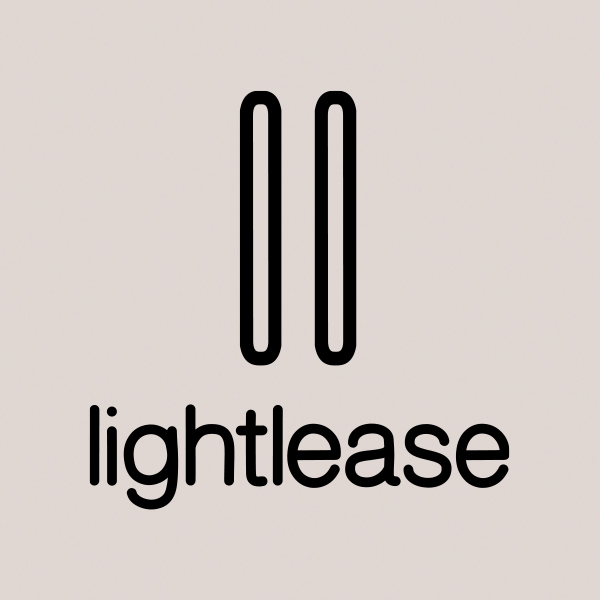
Contact Lightlease for all enquiries
- Steve Young
- +44(0)7713 386084
- steve@lightlease.co.uk
- 262-264 Regent Street, London, W1B 3AQ
- Tom Pope
- +44(0)7901 823 003
- tom@lightlease.co.uk
- 262-264 Regent Street, London, W1B 3AQ